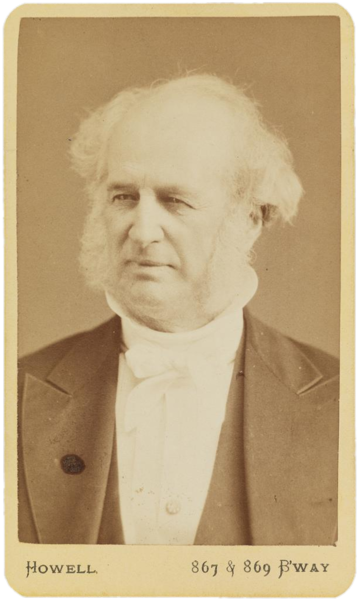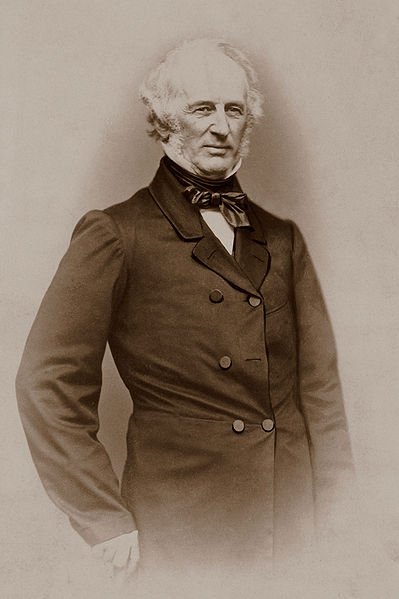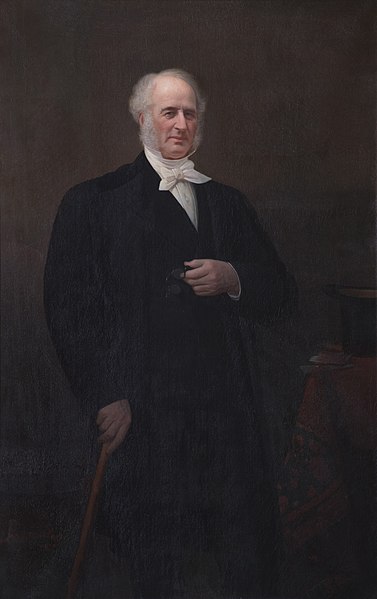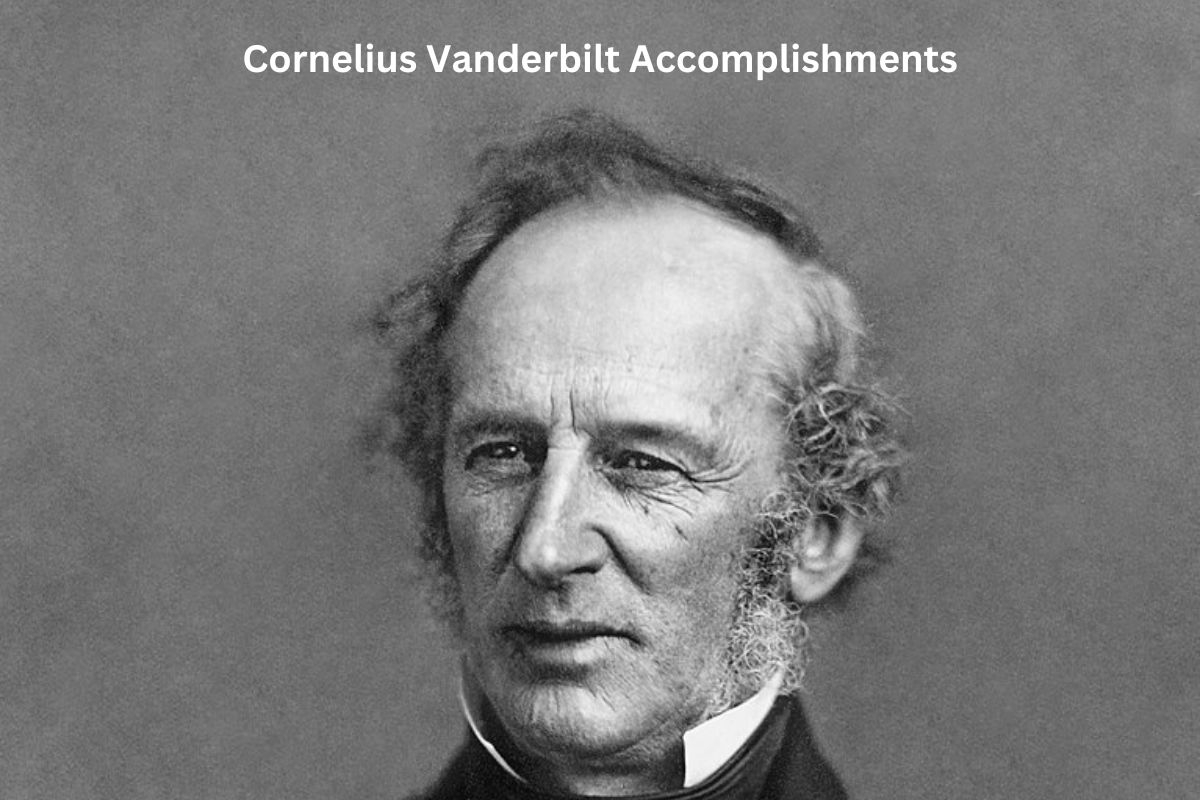Cornelius Vanderbilt, known as the “Commodore,” was a prominent American business magnate and philanthropist of the 19th century.
He rose to prominence through his achievements in the transportation industry, particularly in steamship and railroad operations.
Vanderbilt’s influence extended to Wall Street, where he played a pivotal role in shaping the American financial landscape.
Despite his reputation as a ruthless businessman, he also made significant philanthropic contributions, leaving a complex and enduring legacy in American history.
Accomplishments of Cornelius Vanderbilt
1. Steamship and Ferry Services
Cornelius Vanderbilt started his career in the transportation industry by operating a ferry service in New York Harbor in the early 19th century.
His ferry business provided essential transportation between Manhattan and Staten Island, which were growing rapidly at the time. This venture marked the beginning of his successful transportation empire.
Also Read: Facts About the Biltmore Estate
As steam engine technology advanced, Vanderbilt transitioned to steamship services, which allowed for faster and more efficient transportation of passengers and goods. He expanded his steamship operations along the Eastern Seaboard, particularly on routes connecting New York City to other major cities and ports.

2. Railroad Expansion
Vanderbilt’s most significant and lasting achievement was in the railroad industry. During the mid-19th century, he recognized the immense potential of railroads as a means of transportation and investment.
Vanderbilt embarked on a series of mergers and acquisitions, consolidating various small railroads into larger, more efficient entities.
Also Read: About J.P. Morgan Facts
His most notable consolidation efforts led to the creation of the New York Central Railroad, which linked New York City to the Midwest. He also played a key role in the development of the Hudson River Railroad, connecting New York City to Albany and the broader state of New York.
These endeavors solidified his position as one of the most influential figures in the American railroad industry.
3. Standardization of Rail Gauges
Cornelius Vanderbilt was a strong advocate for the standardization of rail gauges across the United States.
During the early days of railroad expansion, different regions used various rail gauges, making it difficult for trains to cross state lines and slowing down transportation efficiency. Vanderbilt’s support for standardization helped promote uniformity in rail construction.
Ultimately, this standardization made it easier for trains to travel seamlessly across the country, contributing to the rapid growth and interconnectedness of the American railroad system. His efforts were essential in shaping the modern American railway network, which became vital for the country’s economic development and expansion.

4. Steamship Monopoly
One of Vanderbilt’s notable accomplishments was his establishment of a virtual monopoly in the steamship industry during the mid-19th century.
Through a series of mergers and acquisitions, he gained control over various steamship companies and routes, particularly those connecting New York City to other major ports and cities along the Eastern Seaboard.
Vanderbilt’s steamship lines became dominant in the transportation of both passengers and goods, allowing him to exert significant influence over shipping rates and schedules. His control of these vital transportation links contributed substantially to his growing wealth and influence.
5. Vanderbilt University
In 1873, Cornelius Vanderbilt donated $1 million to create an endowment for a university in Nashville, Tennessee.
The institution, named Vanderbilt University in his honor, has grown into a prestigious research university known for its commitment to education and research.
His philanthropic act has had a lasting impact on education, providing students with access to high-quality learning and advancing knowledge across various fields.
6. Railroads and Wall Street
Vanderbilt’s involvement in railroads extended beyond just building and consolidating rail lines. He also made a name for himself in the world of finance and investment on Wall Street. His keen understanding of the railroad industry’s potential for profit led him to invest heavily in railroad stocks.
Vanderbilt was one of the earliest investors in the American stock market and played a significant role in shaping the financial landscape of the time.
He used his financial acumen to amass substantial wealth through stock speculation, often focusing on railroad companies’ shares, which were at the heart of the economic growth and expansion of the United States during the 19th century.

7. Competition with Daniel Drew
Cornelius Vanderbilt engaged in a famous and heated stock market battle with fellow financier Daniel Drew during the Erie War of 1868. At the center of this conflict was the Erie Railroad, a valuable and highly contested railroad line. Vanderbilt, with his considerable resources, sought to gain control of the Erie Railroad.
However, Daniel Drew and other adversaries used various tactics, including stock manipulation and deception, to thwart Vanderbilt’s efforts. The battle between these two financial titans garnered significant attention and became a symbol of the ruthless competition that characterized the Gilded Age on Wall Street.
Ultimately, Vanderbilt emerged victorious and gained control of the Erie Railroad, adding to his extensive railroad empire.
8. Financial Innovations
Cornelius Vanderbilt introduced pioneering financial strategies and practices that left a lasting impact on business and finance in the 19th century:
- Stock as Currency: Vanderbilt used corporate stock as payment, allowing him to acquire businesses efficiently without depleting cash reserves.
- Mergers and Acquisitions: He aggressively consolidated companies, setting the stage for modern mergers and acquisitions.
- Market Speculation: Vanderbilt’s strategic stock trading contributed to his immense wealth and influenced future investors.
- Vertical Integration: He invested in related businesses to improve operational efficiency within his transportation empire.
Vanderbilt’s financial innovations made him a trailblazer in the business world, shaping modern finance practices.
9. Philanthropy
Despite his reputation as a ruthless businessman, Cornelius Vanderbilt also left a mark through his philanthropic endeavors. He recognized the importance of giving back to society and made several substantial charitable contributions during his lifetime.
One of his most significant philanthropic acts was the donation of $1 million to endow a university in Nashville, Tennessee. This institution, founded with his financial support, was named Vanderbilt University in his honor.
His philanthropic gestures extended to other causes as well, including the support of churches, hospitals, and charitable organizations. These acts of giving showcased a more benevolent side of Vanderbilt and contributed to his enduring legacy.
10. Legacy
Cornelius Vanderbilt’s legacy is multifaceted and enduring. He played a pivotal role in shaping the American transportation infrastructure during the 19th century. His innovative and aggressive consolidation of railroads and steamship lines transformed the way people and goods moved across the United States.
Vanderbilt’s emphasis on efficiency, standardization, and financial acumen left a lasting imprint on the transportation industry, influencing the development of modern logistics and transportation systems.
